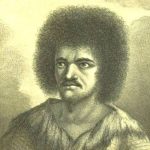
HISTORICAL OVERVIEW:
In May of 1655, under a plan aimed against Spain known as the “Western Design”, the English Fleet of 38 ships and about 8,000 men sailed into Kingston Harbor. The “Roundheads” under Oliver Cromwell’s leadership had many motives for attacking the Spanish. Chief among them was to avenge the deportation of English Settlers from St. Kitts in 1629 and the countless attacks on English ships resulting in the murder and enslavement of their crews. The Expedition assembled to enforce the “Western Design” was perhaps the worst equipped and poorly organized to ever leave England. Sailing in secrecy from Portsmouth England at the end of December 1654, the Expedition achieved some moderate success when, after five weeks at sea, they stopped in Barbados. There eleven Dutch ships were seized by Admiral Penn to be used as transports. Food and arms were demanded along with 4,000 men recruited for the Expedition Army.
Santo Domingo, capital city of Hispanola and a Spanish stronghold was the next target according to the instructions set down in the “Western Design” plan. A tactical error in landing the forces 30 miles outside the city without sufficient food or water caused panic and disorder. Sickness from drinking polluted water and the long march made the Expedition vulnerable to Spanish lancers and local cattle hunters. A complete massacre of the nearly 12,000 man Expeditionary force was only averted by successfully landing a party of sailors who covered their retreat. Nearly 4,000 men were left behind as dead or missing. Fearful of Cromwell’s anger over the failure at Santo Domingo, a hasty decision was made to attack another thinly populated and weakly defended Spanish island; Jamaica.
Children of Accompong Town
With less than 1,500 Spaniards on the island and only about 500 able to bear arms, the English made another blunder. Instead of pressing the attack and taking advantage of the superiority of sheer number of troops, they handed the Spaniards an offer to surrender with terms to leave the island if they so desired. Venables, the Expedition leader, unwisely gave the Spaniards time to consider these terms. During this time the Spanish turned their cattle loose and escaped to the North Coast and from there to Cuba. When the Expeditionary army marched into Spanish Town, they found it empty and bare of booty. In anger and disappointment, they destroyed much of the town.
Before departing, the Spanish also freed their slaves and left them behind in the mountains to harry the English until they could amass a force for reconquest of Jamaica. These freed slaves, later to become famous as the Maroons, were organized into a fighting force by Christoval Arnaldo de Ysasi before he too escaped to Cuba. These first Maroons settled mainly in the St. John district of St. Catherine still called Juan de Bolas after one of their chiefs whose real name was Juan Lubolo, on Vera-mahollis Savanna (Los Vermejales) and on the Rio Juana (exact location uncertain). The name “Maroon” probably derived from the Spanish “cimarron” meaning wild, untamed. The Maroons whose number kept swelling from the addition of more runaway slaves continued to raid the English plantations and become a thorn in England’s plan to colonize Jamaica but it was tolerated until 1663 when an offer was made for land and full freedom to any Maroon who surrendered. The Maroons ignored the offer. This failure to come to terms was to result in 76 years of irregular warfare; expenditure of nearly 250,000 English Pounds and passing of some 44 Acts of the Assembly.
Flashy in his Store
CUDJOE AND THE FIRST MAROON WAR:
In 1690 a large group of slaves in Clarendon, consisting mainly of Coromantees an extremely brave and warlike people from Africa’s Gold Coast, rebelled and escaped into the dense woods. Soon they would join forces with the Spanish-freed Maroons under the able leadership of one of their number named Cudjoe. We are told he was a thick necked, short, extremely squat man with a large lump of flesh upon his back. They say he was “bear-like” in appearance and often acted in a strange wild manner. Cudjoe, with the help of his two brothers Accompong and Johnny (in the West or Leeward side), and two sub-chiefs Quao and Cuffee (in the East or Windward side), began a campaign of murder and robbery known to history as the First Maroon War. Disguised from head to foot with leaves and cunningly concealed, the Maroons chose to attack from ambush. This form of warfare along with their skill in woodcraft and familiarity with the untracked forests along with their legendary skill as marksman baffled and confounded those sent to fight them. Keen-eyed lookouts would spot an approaching force long before their arrival and spread the warning through the abeng horn, a kind of bugle made from a cow’s horn. Especially skilled horn blowers could use particular calls to summon each member of their party from long distances as if they were face-to-face. The English forces suffered huge losses both from the sharp shooting Maroons and the tropical diseases that were very common at that time.
Blowing the Abeng
In 1734 Captain Stoddart lead a successful attack on Nanny Town (named for a Maroon Chieftainess) aided by Mosquito Coast Indians and tracking dogs. The town was completely leveled and to this day is believed haunted by the ghosts of those who died in that battle. Cudjoe, finding himself less secure, moved further into the Trelawny Cockpits and those that escaped the battle moved even further into the Cockpits to establish a new village site. The fighting soon resumed. With a slave to owner ratio of 14:1 and successful new raids on plantations occurring more frequently, the Assembly was sufficiently alarmed to vote the necessary funds for a large scale campaign against the Maroons. The situation was getting desperate for the Maroons as their provision grounds were destroyed and they were forced into smaller areas. The alternative of surrender over starvation was becoming a real option…..but the government did not know this. Shortly after a bloody massacre of English soldiers by a band of Maroons led by Cudjoe from a hiding spot in a cave to be later dubbed the Peace Cave, the King of England in 1738 commissioned Colonel Guthrie to seek out Cudjoe and offer him favorable terms of peace.
Marshall, Kindah One Family Tree
END OF THE FIRST MAROON WAR: PEACE
On January 6th 1738, Colonel Guthrie and Colonel Cudjoe exchanged hats as a sign of friendship and, after some discussion, the treaty was agreed to under a big cotton tree then called Cudjoe’s tree and today called the Kindah One Family tree. By its terms the Maroons were granted full freedom and liberty, given 1,500 acres of land and the right to hunt wild pig anywhere except within a 3 mile limit of a town or plantation. Cudjoe was appointed Chief Commander in Trelawny Town and his successors in order beginning with Accompong and Johnny. The Chief Commander or “Colonel” as he is called today is empowered to inflict any punishment he thinks proper for crimes committed by his people except those requiring the death sentence when then they are handed over to a justice of the peace. The Maroons had to agree to end all hostilities, receive no more runaway slaves and further agreed to help recapture them for a reward when the runaways were returned to their owners. Finally the Maroons had to agree to suppress any local uprising or foreign invasion. The following year a similar treaty was agreed to and signed with Quao, Chief of the Windward Maroons in what is called Moore Town today. The First Maroon War had officially ended and more than 50 years of peace ensued. Two more conflicts were later dubbed the Second Maroon War and the Third Maroon War but neither of these involved the Accompong Town Maroons. They remained neutral in both conflicts and remain so today.[1] [2] [3]
Marshall at Peace Cave
ACCOMPONG TOWN MAROONS: PAST, PRESENT AND FUTURE.
Not all historical accounts written by Western scholars agree with the Maroon Historian’s versions of those same events. One such example is the signing of the Peace Treaty ending the First Maroon War. No mention of the Peace Cave as the official site of the treaty signing can be found in history textbooks but Maroon Historians insist that Colonel Guthrie and Colonel Cudjoe signed the Peace Treaty in a “blood brother” ceremony within it’s confines. Location of that original Peace Treaty is hard to pin down as the Maroon Historians only say a trusted Maroon elder is the keeper of this valuable document and keeping its location secret is a top priority. Accompong Town is a relatively new settlement as the original village “Old Town” where Cudjoe is buried was abandoned in favor of higher ground when Accompong, his brother, took over leadership of the Maroons. This “Old Town” is considered sacred ground today and a secret ceremony is performed there each January 6th when the signing of the Peace Treaty is celebrated. The position of “Colonel” was once a lifetime position but now has been modified to a 5 year elected position.
In the 263 years since the Peace Treaty was signed, the Accompong Maroons have had only 1 unfortunate incidence of a capital crime requiring the intervention of a justice of the peace making this a truly remarkable place. There are no Jamaican Police in Accompong and the substation in Maggotty is on-call if needed but that has never been necessary as the Maroons are quite capable of policing themselves. There are no ground-based telephones in Accompong. Pipe water is relatively new and not in all areas of the community. Electricity has been available for a number of years but not in all homes. The roads to Accompong Town are in dire need of repair and only local professional drivers or vehicles built for off-road terrain should attempt to drive there. Some new Guest Houses have been constructed as of late and overnight, as well as Day Visits by tourists, are roundly encouraged by the Maroon Council and community members.
The future of Accompong and its residents is in question. No jobs in the community mean that many Maroons have to go past the gate to get employment. The Government of Jamaica along with the Tourist Product Development Company is currently trying to help remedy this situation. Efforts to preserve the history, folklore, music and craft making skills have been ongoing as well as training the youth to carry on the proud traditions is being instituted. Approximately 500 residents live in Accompong Town or in the surrounding Cockpit Country. Another possible 5,000 live around Jamaica and still another 10,000 or more are scattered in foreign countries like Canada, the US and Great Britain. However, as they say, “once a Maroon, always a Maroon!”[4]
Nicky Close Up
PLANNING A VISIT?
Anyone who desires to see Accompong Town, learn its history, walk to the Peace Cave or just “hang out” with some of the finest people in Jamaica are welcome to contact me, Bill Evans at: [email protected] OR [email protected] . I am always happy to help my friends in Accompong Town and to help you have a unique experience you will treasure forever.
I would like to acknowledge the following sources of information from which I compiled this condensed version of Maroon History.





